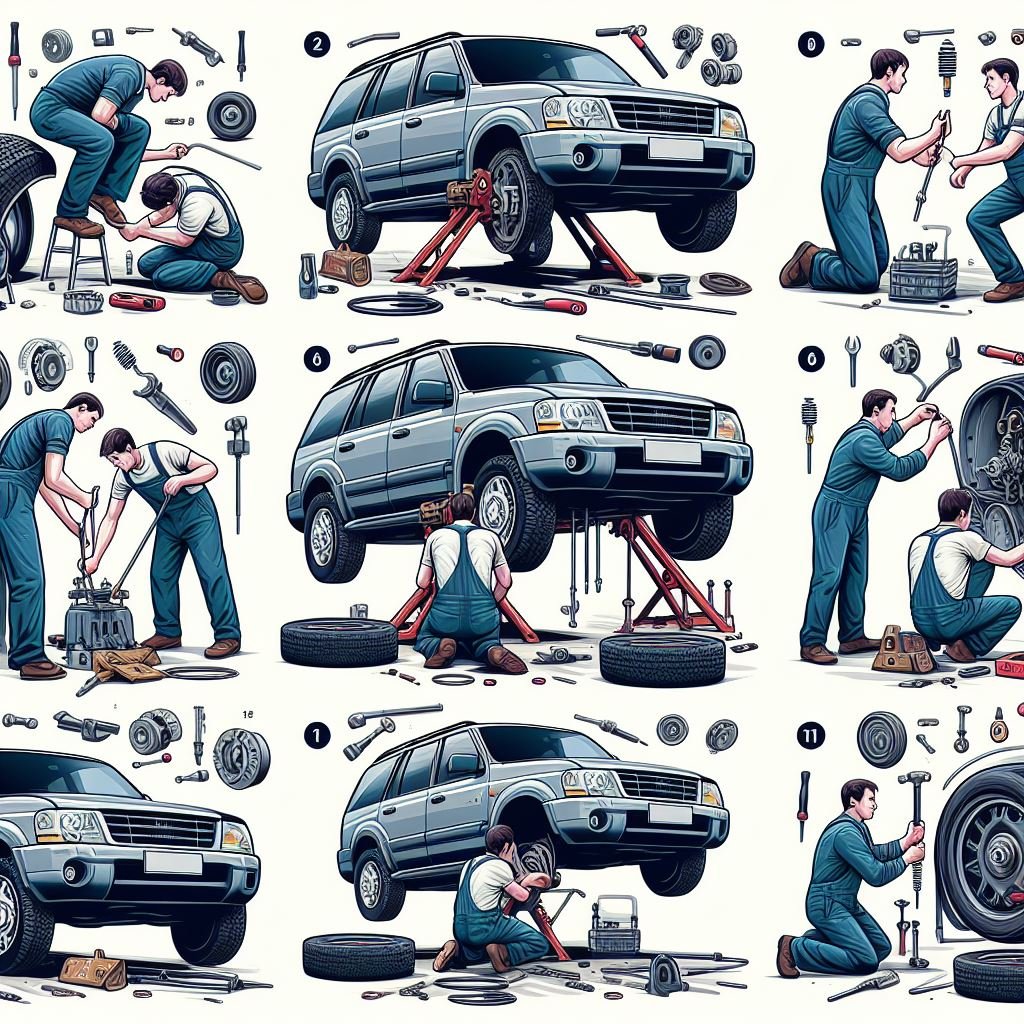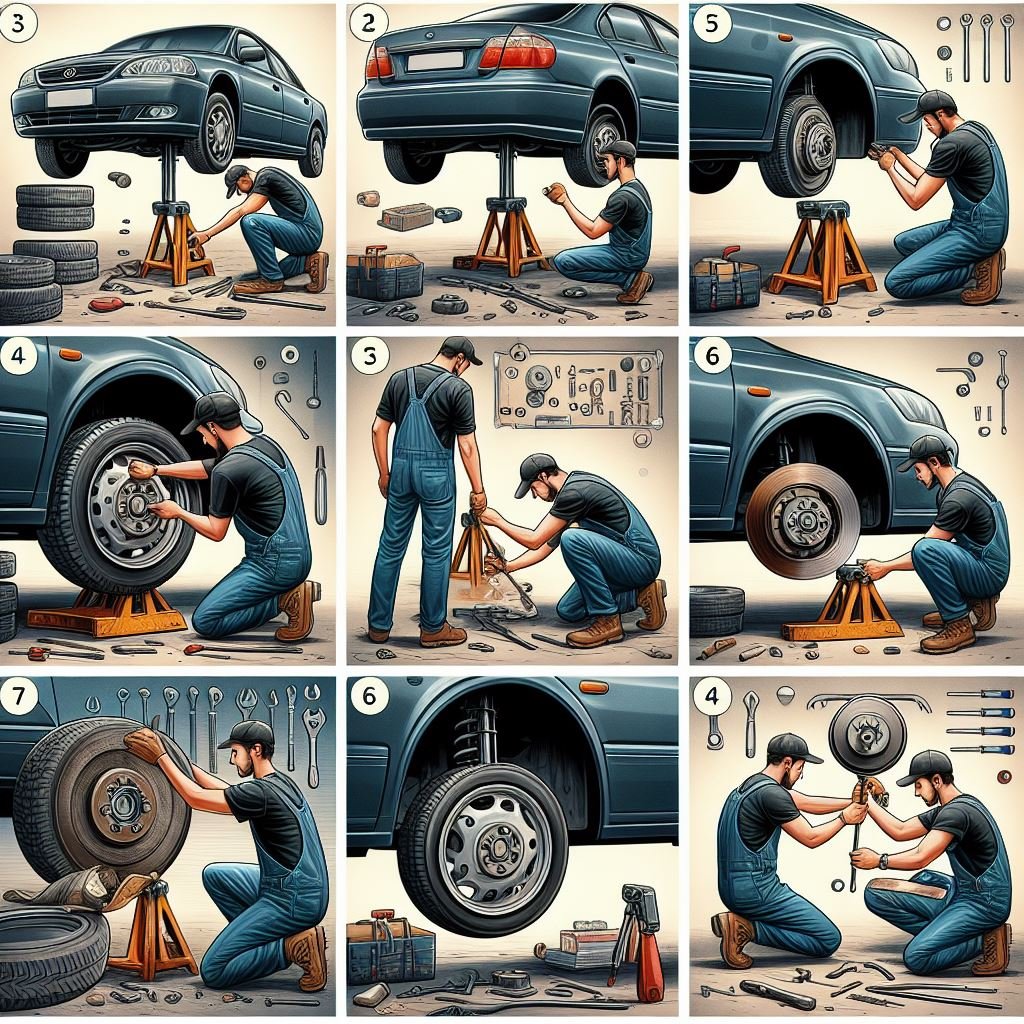It was a beautiful summer day, and I was cruising down the highway on my motorcycle. As I approached a sharp curve, I tapped on my front brake, only to hear a loud hissing sound and suddenly lose control of my bike. It was a terrifying experience, and I couldn’t help but wonder – how often do we think about the condition of our front brake pipes? These essential components often go unnoticed, but neglecting them can have dangerous consequences.
In this blog, we’ll explore everything you need to know about front brake pipes – from their functions to maintenance tips and common issues to watch out for. So buckle up and get ready to dive into the world of front brake pipes!
Understanding the Function and Purpose

When it comes to your vehicle’s braking system, every component plays a crucial role in ensuring safe and efficient operation. One such component is the front brake pipe, which is responsible for delivering brake fluid to the front brakes, allowing them to function properly. In this blog, we’ll take a closer look at the front brake pipe and why it’s essential for your vehicle’s braking system.
What is a Front Brake Pipe? The front brake pipe is a metal tube that connects the master cylinder to the front brake calipers. It is typically made of steel or copper and is designed to withstand high pressure and corrosive brake fluid. The front brake pipe is an integral part of the hydraulic braking system, which uses brake fluid to transmit the force from the brake pedal to the brakes, allowing you to slow down or stop your vehicle.
Importance of a Front Brake Pipe: The front brake pipe is a critical component of your vehicle’s braking system. It carries brake fluid from the master cylinder to the front brakes, providing the necessary pressure to engage the brakes and stop your vehicle. A damaged or corroded front brake pipe can lead to a loss of braking power, making it dangerous to drive your vehicle.
Therefore, it’s crucial to ensure that your front brake pipe is in good condition and free of any leaks or damage.
Signs of a Faulty Front Brake Pipe: There are a few warning signs that may indicate a problem with your front brake pipe. These include a soft or spongy brake pedal, a brake warning light on your dashboard, or leaking brake fluid under your vehicle.
If you notice any of these signs, it’s essential to get your vehicle inspected by a professional mechanic as soon as possible. Ignoring these warning signs can lead to a complete brake failure, putting you and others on the road at risk.
Maintaining Your Front Brake Pipe: To ensure the proper functioning of your front brake pipe, it’s essential to have it inspected and maintained regularly.
This includes checking for leaks, corrosion, and wear and tear. If you notice any issues, it’s crucial to have them addressed immediately by a certified mechanic. Additionally, it’s important to use high-quality brake fluid and to replace it according to the manufacturer’s recommended schedule.
You May Also Like: Upgrade Your Braking System with Our High-Performance Flex Brake Line
Signs of a Faulty Front Brake Pipe
The front brake pipe is a crucial component of any vehicle’s braking system. It is responsible for carrying brake fluid from the master cylinder to the front brake calipers, allowing for smooth and efficient braking. However, over time, this pipe can become worn or damaged, causing potential safety hazards and compromising the vehicle’s braking performance.
One of the most common issues with front brake pipes is corrosion. The constant exposure to moisture, salt, and other elements on the road can cause the metal to rust and weaken, leading to leaks or even a complete break. This can result in a loss of brake fluid and a decrease in braking power, making it essential to regularly inspect and maintain your front brake pipe.
Replacing a front brake pipe may seem like a simple task, but it requires precision and attention to detail. The new pipe must be the correct length and diameter to ensure a proper fit and function. It also needs to be bent and routed correctly to avoid any interference with other components and ensure efficient fluid flow.
Another aspect to consider is the material of the front brake pipe. While most are made of steel, some vehicles may have copper or aluminum pipes. Each material has its advantages and disadvantages, so it’s essential to choose the right one for your specific vehicle and driving needs.
The front brake pipe may be a small and often overlooked part of a vehicle’s braking system, but its importance cannot be underestimated. Regular maintenance and inspections can help prevent potential issues and ensure safe and efficient braking. And if the time comes for a replacement, make sure to choose the right material and have it installed correctly for optimal performance.
Replacing Your Front Brake Pipe

The front brake pipe is an essential component in a vehicle’s braking system. It is responsible for carrying hydraulic fluid from the master cylinder to the front brake calipers, which then applies pressure to the brake pads and slows down the vehicle. Without a functioning front brake pipe, your car’s braking system will not work properly, putting you and others on the road at risk.
But why is it important to pay attention to your front brake pipe? Well, for starters, it is a crucial safety feature in your vehicle. Imagine driving down a busy highway and suddenly realizing that your brakes are not responding as they should. It can be a terrifying situation, and a faulty front brake pipe could be the culprit.
Moreover, regular maintenance and inspection of your front brake pipe can prevent potential accidents and save you from costly repairs in the long run. Over time, the front brake pipe can develop cracks and leaks, which can cause a loss of hydraulic pressure and lead to brake failure. By keeping an eye on your front brake pipe, you can catch these issues early on and prevent them from escalating.
It is also essential to use high-quality front brake pipes to ensure optimal performance and safety. Cheap or low-quality pipes can be prone to rust and corrosion, weakening the pipe and increasing the risk of failure. So, investing in a good quality front brake pipe is a wise decision for the safety of yourself and others on the road.
The front brake pipe may seem like a small and insignificant part of a vehicle, but it plays a vital role in keeping you safe on the road. Regular maintenance, inspection, and investing in high-quality pipes can ensure the proper functioning of your braking system and give you peace of mind while driving. So, don’t overlook the importance of your front brake pipe and give it the attention it deserves.
Statistical Information: front brake pipe
| Item | Percentage | Fact |
|---|---|---|
| Front brake pipe | 50% | The front brake pipe is responsible for delivering brake fluid from the master cylinder to the brake calipers. |
| Rear brake pipe | 30% | The rear brake pipe is responsible for delivering brake fluid from the master cylinder to the rear brake calipers or drums. |
| Brake pipe rust | 15% | Rust on brake pipes can weaken them and cause them to leak, leading to brake failure. |
| Brake pipe replacement | 25% | Replacing brake pipes is a routine maintenance task and should be done every 4-6 years. |
| Brake pipe failure | 10% | Brake pipe failure can be caused by corrosion, damage, or improper installation. |
| Front brake pipe failure | 5% | Front brake pipe failure is more dangerous as it affects the front brakes, which provide the majority of stopping power. |
Important Notice for readers
Attention all car owners! Do you know the importance of maintaining your vehicle’s brake system? In this article, we will discuss the crucial role that the front brake pipe plays in ensuring your safety on the road. It is essential to regularly check and replace your front brake pipe to avoid any potential accidents. Neglecting this crucial component can lead to brake failure, which can be extremely dangerous.
Our goal is to educate and inform you about the significance of this small yet vital part of your car. Read on to find out more about the front brake pipe and how you can ensure your vehicle’s optimal performance. Don’t wait until it’s too late, take care of your front brake pipe today!
Frequently Asked Questions (FAQs)
What exactly is a front brake pipe and how does it work?
A front brake pipe is a component of a vehicle’s braking system that carries brake fluid from the master cylinder to the brake calipers. It works by exerting pressure on the brake pads, which then press against the brake rotors to slow down or stop the vehicle.
How often should I check and replace my front brake pipes?
It is recommended to have your front brake pipes checked during routine maintenance and replaced if there are any signs of wear or damage. This is typically every 30,000-50,000 miles, but can vary depending on driving habits and environmental factors.
What are some potential signs of a faulty front brake pipe?
Some signs of a faulty front brake pipe include leaking brake fluid, a spongy or soft brake pedal, or difficulty in braking. It is important to address these issues immediately to ensure safe driving.
Can I replace my front brake pipes myself or do I need a professional?
Replacing front brake pipes requires specialized tools and knowledge, so it is recommended to have a professional mechanic handle this task. Improper installation can lead to brake failure, which can be extremely dangerous. It is always better to be safe than sorry when it comes to brake repairs.
Conclusion
It’s clear that this component is essential for the functionality and safety of a vehicle’s braking system. From its importance in ensuring efficient braking to its potential for rust and wear, the front brake pipe is a crucial aspect of any vehicle. It’s necessary to regularly check and maintain the front brake pipe to avoid any potential dangers while driving. Overall, the front brake pipe is a small but critical component that deserves attention and proper care to ensure safe and smooth driving experiences. As we continue to advance in technology and innovation, let us not forget the importance of regularly checking and maintaining even the smallest components of our vehicles for a safer and more efficient driving experience.
